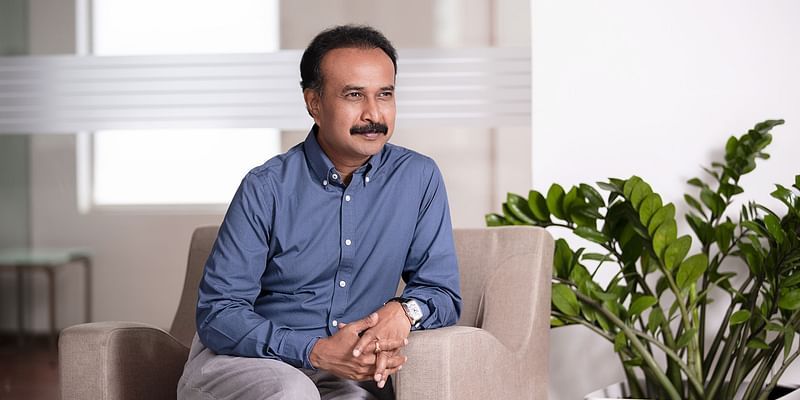By Ishan Patra
Copyright yourstory

Advanced manufacturing powered by deep tech and AI is a half-trillion-dollar opportunity, potentially as large as or larger than the IT industry, according to Prashanth Prakash, Founding Partner of global venture capital firm Accel Partners.
“It’s not just about the new half a trillion. But this new half a trillion that can come from deep tech-first and IP-first manufacturing, which we call as advanced manufacturing, can give the nation the type of sovereign autonomy and sovereign leverage that we have been missing,” he remarked during a fireside chat on AI – Current State and the Future, with Rabindra Srikantan Chairman, CII Karnataka, and Managing Director ASM Technologies, at CII India Innoverge 2025 on Friday.
Advanced manufacturing can give India sovereign leverage by owning intellectual property (IP) and production capability rather than relying on imported technology. It represents a shift from being a service provider to becoming a creator of core technologies and products that the rest of the world depends on.
Prakash explained that advanced manufacturing is not about replicating what China has already achieved in large-scale production. India’s opportunity lies in combining deep science, robotics, autonomy, materials innovation, and artificial intelligence (AI) to build higher-order manufacturing systems that are inherently more defensible.
These companies, he said, will be difficult to disrupt because their value is embedded in proprietary processes, machines, and intellectual property. Unlike consumer or IT startups that rely mainly on network effects, these new firms can compound their value over the course of decades. Venture investors are increasingly drawn to this area because it enables durable value creation and technological depth.
Prakash linked this industrial vision to a broader technological shift, which he calls the digitisation of cognition. He sees this as the next major phase after the IT and mobile revolution, which gave digital access to a billion people. However, AI is now digitising human reasoning itself.
This, he said, is what makes AI profoundly disruptive. The pace of change is also unprecedented. Whereas the IT revolution unfolded over two decades and the mobile revolution took about one, ‘digitisation of cognition’ is advancing in less than five years.
According to him, India is well-positioned to participate in this transformation. The country may not yet have the capital to build global foundational models, which require investments of $30 to $40 billion each, but it can build context-specific and smaller large language models (LLMs) suited to Indian languages and use cases.
He pointed out that India has exceptional strengths in talent density, diverse and multilingual data, and regulatory frameworks in the finance and healthcare sectors. These assets provide the basis for building applied AI solutions that can serve both domestic and global markets.
Prakash outlined three layers of the AI stack. The first is the foundational model layer, dominated by a few global players. The second is the infrastructure layer, which includes data centres, orchestration, and monitoring software. India already has experience in this area from its history in IT.
The third layer is the application or agentic layer, which he describes as the most dynamic part of the ecosystem.
“AI will not necessarily replace SaaS. AI will be via SaaS. So, all the agentic orchestration will be initially on the current SaaS software. And you will see agentic layers work on orchestrating these SaaS software that are already there. Nobody is going to replace all those SaaS software overnight,” he said, adding that AI-first SaaS software is probably about a couple of years away.
A lot of Indian venture investment is now directed toward startups creating AI-first software, agentic orchestration, and domain-specific applications, as these are the areas where India can compete most effectively.
Beyond software, Prakash highlighted the emerging field of physical AI, where AI interacts with the physical world through robotics, drones, and automation. He sees strong potential for Indian startups in defence, logistics, and industrial inspection. The country’s growing defence procurement market and its transition from digital to autonomous technologies create new commercial openings.
He noted that in recent months, 20-25 startups have been funded in this space, working on high-altitude logistics drones and autonomous systems.
(Edited by Suman Singh)